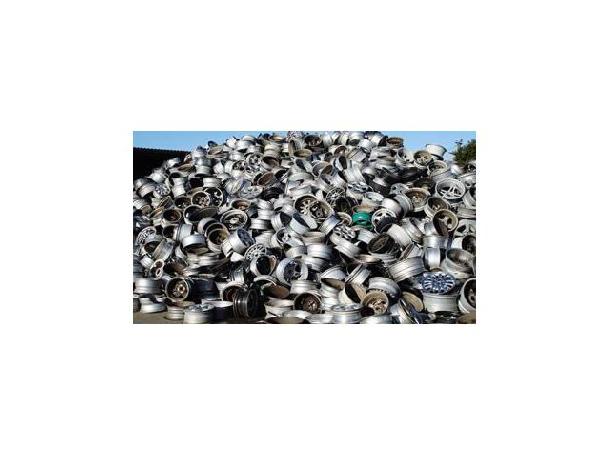Bargain Reviews
- 0 likesSell Your Scrap Metal - We Offer Competitive PricesTransparent communication throughout the project lifecycle flat roofing services ... (24/04/2024 07:31:02)
- 0 likes여주출장샵『카톡asy521』◑ 24시출장안마⌠일본여성출장만남⌡여주콜걸◑ Awesome post. Typically the put up can affect a considerable amount of instant concerns our the community. We tend to can't be uninvolved towards such concerns. This unique put up will provide good id ... (24/04/2024 07:30:27)
- 0 likesRoof Gutter Cleaning servicesInvestment in employee health and safety training to minimize workplace risks flat roofing services ... (24/04/2024 07:03:38)
- 0 likesLake Macquarie Roof Replacement Group - Caves BeachCorporate social responsibility is central to our ethos, promoting diversity, inclusivity, and sustainable urban development. flat roofing services ... (24/04/2024 07:03:20)
Drone Flight Simulation
Drone Flight Simulation
The global commercial drone market is anticipated to reach over $500 billion by 2028, with a CAGR of over 50%, and there is considerably increased demand for both commercial and personal use drones. Drone performance depends on many factors, which require design simulation to evaluate behavior and performance under actual conditions. SimScale is fundamentally a multiphysics simulation platform and supports a broad range of simulation physics applicable to drones and UAVs. A simple workflow in the SimScale platform can guide engineers through a drone/UAV simulation, showing the external aerodynamics using CFD and static structural simulation for loading and vibration analysis. New features such as automated mesh refinement zones can help users leverage cloud-native multiphysics simulation to analyze drones and UAVs. These features benefit engineers involved in developing and manufacturing drones/UAV propeller-based propulsion systems. This article describes the simulation setup and design insight for a quadcopter drone.Get more news about Drone Simulation Company,you can vist our website!
Simulating a Quadcopter
Starting with the airflow and aerodynamic performance, we can set up a CFD case to evaluate the quadcopter in hover mode. This is especially important to investigate as it thoroughly consumes the most power requirements. Drones in hover mode will also be in close proximity to the ground/roof or other objects and might be in confined spaces. Many applications will include drones entering or close to construction sites, mines, and homes for delivering packages and in urban areas where turbulence is more significant. Aerodynamic stability in hover mode is thus critical for the safety and overall performance of the drone and its surroundings.
We have taken a Parasolid CAD file of a standard quadcopter and made minor adjustments by removing the landing legs and camera mounts. This was done to simplify the geometry. Using the CAD editing feature in SimScale called CADmode, we can create the external fluid domain and further edit the geometry. In the first instance, we created rotating zones for the rotors with a rotational speed of 10,000 rpm. We have selected the Subsonic analysis type in SimScale, which lends itself to rotating machinery applications The Subsonic analysis type includes a robust meshing strategy that produces an automated and robust hexahedral cell mesh, using the Cartesian meshing technique that significantly reduces mesh generation times by order of magnitude. It uses a finite volume-based solver optimized to handle a wide range of flow types. We have applied a globally coarse mesh with refinements around the rotating zones. Engineers and designers who evaluate the drone in hover mode will want to know its thrust performance, rotor-rotor, and rotor-airframe interactional effects. Selecting the analysis type automatically creates the simulation tree, a guided workflow for completing the simulation setup and post-processing the results. A user can now go through and set the material properties and boundary conditions and add rotational speeds to the rotating zones. The rotors are made of a polymer material (PVC); the fluid is air by default. Further time savings can be achieved by exploiting the symmetrical nature of the drone geometry and reducing the model size.
Using a transient simulation to capture time-dependent effects, we simulated for 200 minutes. Users can see velocity around the quadcopter and ascertain pressure to see forces in regions of interest, such as the rotors and joints.  Until 02/07/2023 00:00:00
Until 02/07/2023 00:00:00 
The global commercial drone market is anticipated to reach over $500 billion by 2028, with a CAGR of over 50%, and there is considerably increased demand for both commercial and personal use drones. Drone performance depends on many factors, which require design simulation to evaluate behavior and performance under actual conditions. SimScale is fundamentally a multiphysics simulation platform and supports a broad range of simulation physics applicable to drones and UAVs. A simple workflow in the SimScale platform can guide engineers through a drone/UAV simulation, showing the external aerodynamics using CFD and static structural simulation for loading and vibration analysis. New features such as automated mesh refinement zones can help users leverage cloud-native multiphysics simulation to analyze drones and UAVs. These features benefit engineers involved in developing and manufacturing drones/UAV propeller-based propulsion systems. This article describes the simulation setup and design insight for a quadcopter drone.Get more news about Drone Simulation Company,you can vist our website!
Simulating a Quadcopter
Starting with the airflow and aerodynamic performance, we can set up a CFD case to evaluate the quadcopter in hover mode. This is especially important to investigate as it thoroughly consumes the most power requirements. Drones in hover mode will also be in close proximity to the ground/roof or other objects and might be in confined spaces. Many applications will include drones entering or close to construction sites, mines, and homes for delivering packages and in urban areas where turbulence is more significant. Aerodynamic stability in hover mode is thus critical for the safety and overall performance of the drone and its surroundings.
We have taken a Parasolid CAD file of a standard quadcopter and made minor adjustments by removing the landing legs and camera mounts. This was done to simplify the geometry. Using the CAD editing feature in SimScale called CADmode, we can create the external fluid domain and further edit the geometry. In the first instance, we created rotating zones for the rotors with a rotational speed of 10,000 rpm. We have selected the Subsonic analysis type in SimScale, which lends itself to rotating machinery applications The Subsonic analysis type includes a robust meshing strategy that produces an automated and robust hexahedral cell mesh, using the Cartesian meshing technique that significantly reduces mesh generation times by order of magnitude. It uses a finite volume-based solver optimized to handle a wide range of flow types. We have applied a globally coarse mesh with refinements around the rotating zones. Engineers and designers who evaluate the drone in hover mode will want to know its thrust performance, rotor-rotor, and rotor-airframe interactional effects. Selecting the analysis type automatically creates the simulation tree, a guided workflow for completing the simulation setup and post-processing the results. A user can now go through and set the material properties and boundary conditions and add rotational speeds to the rotating zones. The rotors are made of a polymer material (PVC); the fluid is air by default. Further time savings can be achieved by exploiting the symmetrical nature of the drone geometry and reducing the model size.
Using a transient simulation to capture time-dependent effects, we simulated for 200 minutes. Users can see velocity around the quadcopter and ascertain pressure to see forces in regions of interest, such as the rotors and joints.
qocsuing 326 days ago





 Deals Facebook
Deals Facebook Google plus
Google plus Deals Twitter
Deals Twitter
Share this bargain with your friends: